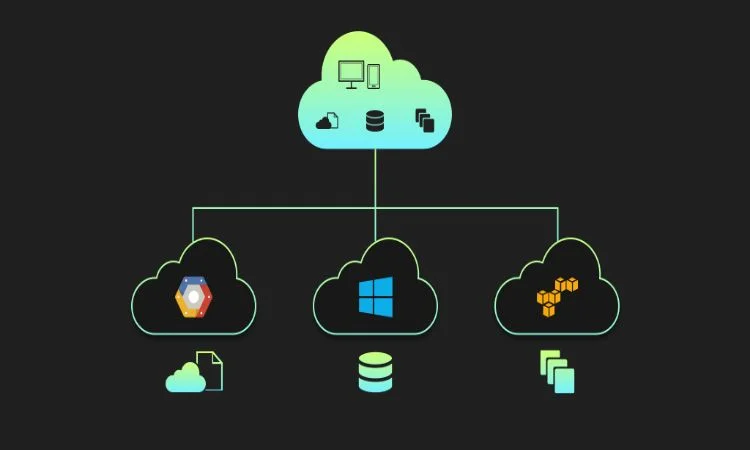Monitoring Performance in the Cloud: Pre- and Post-Migration Analysis

To guarantee your system surpasses its on-premises performance after migration and empowers you with effective cloud budget management, consider integrating a user-friendly analytics system.
Thanks to this solution, you will get intuitive dashboards and proactive alerts. Dashboards prioritize key technical metrics influencing both your cloud solution’s performance and costs.
Ensure a seamless cloud journey at every stage through continuous monitoring and optimization.
Addressing the Difficulty of Precisely Evaluating Cloud Workloads
A poorly executed migration from on-premises to the cloud can rapidly deplete a year’s budget. You need to accurately assess the performance requirements of workloads in the new cloud environment, and often it is a challenge. Additionally, differences between on-premises and cloud provisioning can result in suboptimal resource allocation choices if not addressed promptly.
Gathering Performance Data from On-Premises as a Benchmark
Begin by gathering information, including metrics, logs, and traces, from your on-premises infrastructure to build a comprehensive performance profile.
- Logs offer detailed information about system activities and events. For instance, analyze an application’s error log records to find details on error messages and affected areas.
- Traces follow the execution of specific processes throughout the entire system, such as an order processing trace in an e-commerce system. It monitors the complete order processing workflow and captures every step like order creation, payment, and shipment. Also, they assist in spotting bottlenecks or failures in the process, preventing them from occurring again.
- Metrics capture how the system is performing at a particular moment. Work Metrics measure page load time, throughput, errors, and performance. Resource Metrics, such as CPU usage, gauge the current status of a system, examining factors like utilization.
This analysis of data ensures that resources in the cloud are allocated efficiently, meeting the specific needs of your system.
Establishing Accurate Benchmarks for Sizing in the Cloud Environment
Rather than just replicating your on-premises setup in the cloud, create clear benchmarks using your existing metrics, traces, and logs. These benchmarks will assist you in understanding the anticipated values and usage patterns for your system in the cloud.
For instance, you might establish a CPU utilization benchmark ranging from 20% to 40% for typical operations, ensuring efficiency without overwhelming resources. Aim for high accuracy, striving to maintain error rates below 1% for all transactions.
These benchmarks act as reference points for continuous performance monitoring and future adjustments, ensuring that your cloud system consistently operates within optimal parameters.
Establishing Alerts That Are Actionable and Relevant for Prompt Responses
After establishing precise benchmarks using your on-premises data, shift our focus to optimizing performance and cost management in the cloud. Your robust system will send alerts to your team to ensure software health and respond to deviations from benchmarks. The alert system includes two types that can be used and combined:
- Use fixed alerts to prevent exceeding a defined absolute value. For instance, in a financial institution, any unauthorized access to sensitive data like credit card information would immediately trigger a fixed alert. This alert is essential for spotting and addressing critical issues that need immediate attention.
- Use adaptive alerts, which are more dynamic and tailored to monitor and respond to abnormal behavior in metrics over time. For example, in cloud migration, adaptive cost alerts help manage expenses by analyzing factors like storage, bandwidth, and computing resources. Suppose your usual monthly cloud budget is $2500, but you’re gradually adding more resources like virtual machines or database storage. These alerts automatically adjust your spending limit accordingly, up to $3000 over a year, without notifying you. However, if there’s an unexpected surge, such as a sudden increase in database storage usage, your team will be promptly alerted, similar to fixed alerts. This approach enables flexible and intelligent cost management, adapting to your evolving cloud resource needs.
Combining both alert types in your monitoring system equips you to address issues promptly and minimize non-actionable alerts.
Challenges in Performance and Cost Management Due to Disparate Data Collection
The problem with using multiple monitoring tools is their separate data outputs. That complicates analyzing performance issues or cost overruns and hinders obtaining a single view of the impact or root cause of incidents or overspending. It ultimately prolongs their duration.
To fix this, combine different tools into one analytics platform. This platform blends technical metrics from various monitoring tools using APIs and displays them in a customizable dashboard for the right people. Assist in moving from reacting to being proactive in monitoring, and responding quickly to incidents.
Simplifying Monitoring through Integration with AWS/Azure Tools
For improved ongoing monitoring following a cloud migration, your cloud specialists can integrate monitoring tools from AWS and Azure into your customized monitoring system.
With all your data in one place, it’s easier to handle cloud performance and expenses, steering clear of overprovisioning and unexpected costs.

Why Smart Startups Choose Custom AI Business Solutions Today

How to Optimize Business Operations with Vending Machines in Australia

How a portable office for sale can streamline on-site operations and boost productivity

Onsite Tire Change in Ottawa : Safe Fast & Professional Tire Services

Accelerating drug discovery through the DEL-ML-CS approach

Top Reasons Law Firms Are Replacing Call Centers With TeleWizard

5 Common Multi-Cloud Networking Mistakes & Fixes

Eye-Catching Composition Techniques Using Action Camera Wide-Angle Lenses








